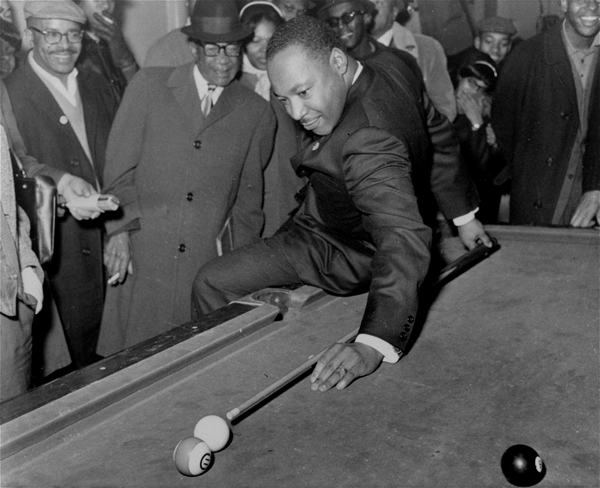
When I think of Martin Luther King Jr., I see him in grainy black and white. He’s addressing a crowd gathered on the Mall in Washington, telling his dream. Or I see him stepping out onto the balcony of his hotel that fateful day in Memphis, heavy weight on his shoulders, face serious and thoughtful and creased with sleeplessness and worry. In my mental portrait of him, he personifies struggle, virtue, and forbearance. He seems beyond me, almost another species.
Which is why it stopped me in my tracks when I first came across a photograph that reveals him in a pose different from any I had ever imagined. The photograph is undated, but I’m sure it’s from the ’60s because King looks very much the way he did toward the end of his life. It is safe to assume that at the time the photo was taken, he was under extraordinary pressure. And yet, in this photo, you cannot see it. King is perched on the edge of a billiard table, surrounded by a crowd of men and women of varying ages. He is holding a pool stick behind his back, getting ready to execute a difficult, off-balance shot. The smile on his face is playful, even relaxed, and the men who are watching him are smiling and laughing, too, as they wait to see if he can pull it off. Nothing in this picture alerts you that King, and the men people who surround him, are fighting for their lives. In this moment, they are happy and full of joy. King is not a saint or a symbol, but a man, a fully human man capable of attempting a funny-looking behind-the-back shot on the billiard table and then tossing his head back in laughter.
The image reminds me that, as much as we think we know about the past, we can’t ever know it in full.

